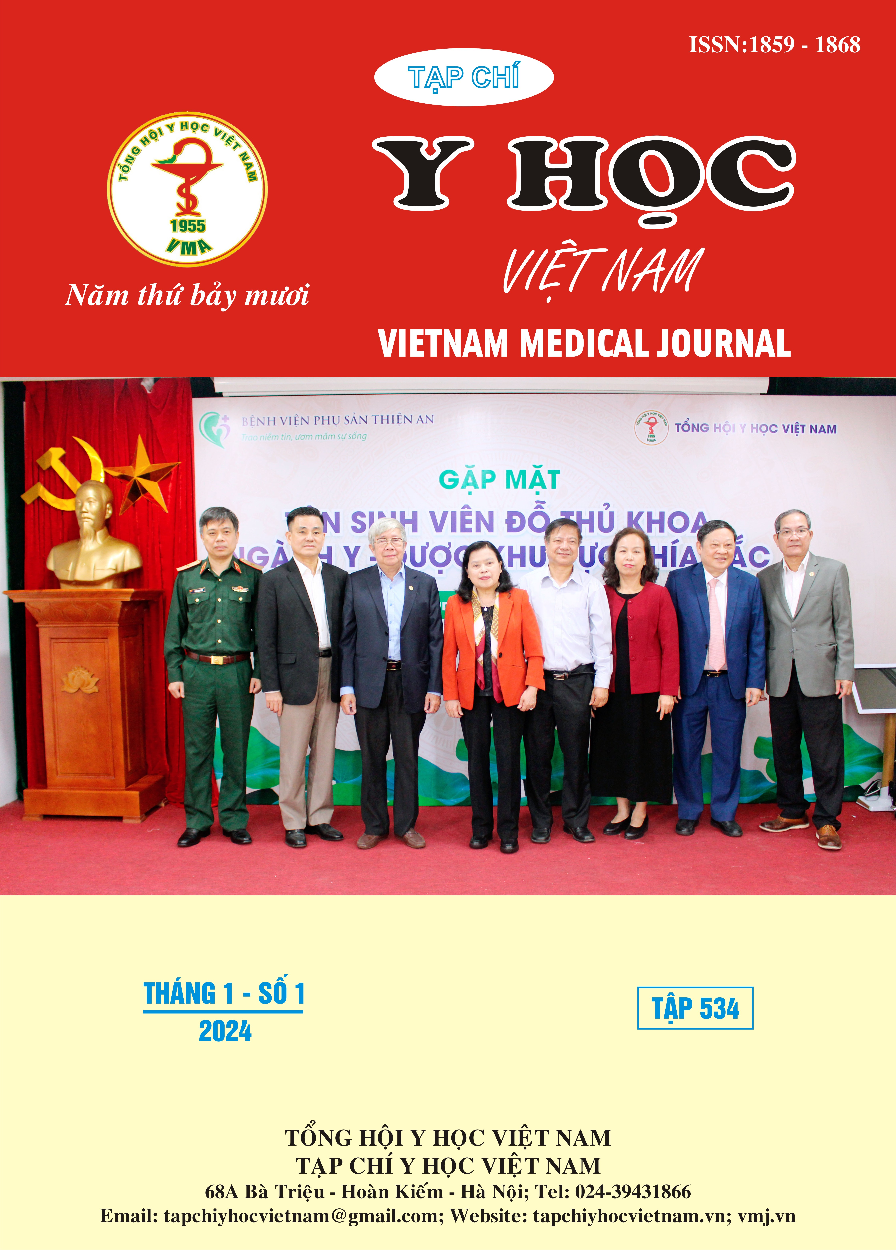SHORT-TERM EFFECTIVENESS OF KINESIO TAPING INTERVENTION IN REHABILITATION FOR PATIENTS WITH SHOULDER PERIATHRITIS HUMEROSCAPULARIS
Main Article Content
Abstract
Objective: Evaluate the short-term effectiveness of Kinesiotaping on patients with Periathritis humeroscapularis. Methods: Prospective study; Randomized, controlled, non-blinded clinical trial on 80 patients with periarthritis of the shoulder at the Department of Rehabilitation - Hanoi Medical University Hospital during the period from November 2022 to June 2023. Assess the pain scale VAS - 100, the SPADI (Shoulder pain and disability index), measure the range of motion of flexion and abduction movements at the initial time, 3 days, 7 days. Results: The intervention demonstrated a significant reduction in pain effectiveness in the Kinesiotaping used group. Specifically, the pain level as measured by the Visual Analog Scale (VAS - 100) decreased from 57.2 to 31.4 in the intervention group, while in the control group, it decreased from 59.9 to 46.7. Regarding pain scores and the reduction in shoulder function (SPADI), shoulder joint function showed a significant improvement in the intervention group, decreasing from 44.8 at baseline to 26.25 at the 7th day after the intervention. In terms of range of motion (ROM), the intervention only showed effectiveness in the flexion movement. On average in the intervention group, ROM for the flexion movement increased from 138 degrees to 159 degrees, while in the control group, it increased to a lesser extent (from 133.7 degrees to 148.9 degrees). Conclusion: Kinesiotaping (KT) has been found to be effective in reducing pain, improving joint mobility, and restoring function in patients with shoulder periarthritis.
Article Details
References
2. Desjardins-Charbonneau A, Roy J-S, Dionne CE, Frémont P, MacDermid JC, Desmeules F. The efficacy of manual therapy for rotator cuff tendinopathy: a systematic review and meta-analysis. Journal of orthopaedic & sports physical therapy. 2015;45(5):330-350.
3. Djordjevic OC, Vukicevic D, Katunac L, Jovic S. Mobilization with movement and kinesiotaping compared with a supervised exercise program for painful shoulder: results of a clinical trial. Journal of manipulative and physiological therapeutics. 2012;35(6):454-463.
4. Drouin JL, McAlpine CT, Primak KA, Kissel J. The effects of kinesiotape on athletic-based performance outcomes in healthy, active individuals: a literature synthesis. The Journal of the Canadian Chiropractic Association. 2013; 57(4):356.
5. Luime J, Koes B, Hendriksen I, et al. Prevalence and incidence of shoulder pain in the general population; a systematic review. Scandinavian journal of rheumatology. 2004; 33(2):73-81.
6. McLaren C, Colman Z, Rix A, Sullohern C. The effectiveness of scapular taping on pain and function in people with subacromial impingement syndrome: a systematic review. International Musculoskeletal Medicine. 2016;38(3-4):81-89.
7. Saracoglu I, Emuk Y, Taspinar F. Does taping in addition to physiotherapy improve the outcomes in subacromial impingement syndrome? A systematic review. Physiotherapy theory and practice. 2018;34(4):251-263.
8. Thelen MD, Dauber JA, Stoneman PD. The clinical efficacy of kinesio tape for shoulder pain: a randomized, double-blinded, clinical trial. journal of orthopaedic & sports physical therapy. 2008; 38(7):389-395.


